Table of contents
Traditionally, coconut water ( Cocos nucifera) is sold in the tropics in green, young coconuts. This young coconut is usually opened with a machete and the coconut water is drunk from it using a plastic straw or straw.
Use in the kitchen
Coconut water (coconut water, coconut juice, coconut sap) is an almost clear liquid from young coconuts. It is found inside the nut and is sterile as long as the coconut is sealed. When it is still young, the coconut contains up to a liter of coconut water. The riper the fruit, the less juice it contains. If coconuts are no longer fresh, the taste can become sour. In European shops, coconut water is now available packaged in tetra packs or bottles. The water from ripe, brown coconuts, as sold here for consumption of coconut meat, often tastes sour and is not intended for consumption.
In countries where coconut juice is grown, it is an important substitute for drinking water, which is why the sweet thirst quencher is often sold on the street as street food. Coconut water is a popular ingredient in smoothies, for example with moringa, passion fruit and kiwi. It is also used as a base for fresh drinks, such as the pineapple mojito with kale. Coconut juice can also be added to curries or soups.
Nata de coco is a Filipino dessert made from bacterially fermented coconut water. It has a firm, jelly-like consistency. Since it has little taste, it is mostly flavored with fruit flavors. It is used as an addition to puddings, yogurt or drinks. Coconut vinegar can be made from fermented coconut water. However, it is produced commercially from the juice of coconut blossoms, which are also used to make coconut blossom sugar.
Vegan recipe for a raspberry-coconut drink
Ingredients (for 4 people): 500 graspberries, 660 ml coconut water, 8 ice cubes, if necessary 1 tbsp agave syrup.
Preparation: Puree raspberries with coconut water in a blender. Sweeten with agave syrup if necessary. Place in the fridge and serve cold with ice cubes.
Vegan recipes with coconut water can be found under the note: " Recipes that have the most of this ingredient ".
| Not only vegans or vegetarians should read this: Vegans often eat unhealthily. Avoidable nutritional errors. |
Purchasing - Storage
Major retailers such as Coop, Migros, Denner, Volg, Spar, Aldi, Lidl, Rewe, Edeka, Hofer and Billa sometimes have coconuts on offer, but rarely drinking coconuts. Even in organic supermarkets such as Denn's Biomarkt and Alnatura, these are often not found in the regular range. Fresh drinking coconuts can be bought in well-stocked delicatessens, Asian shops or online. Freed from the outer green or yellowish shell, they appear whitish.
In addition to coconut water from coconuts, you can also buy bottled, ultra-heated coconut water in bottles or tetra packs, some of which are organic. This can also be found under the names "coconut water", "coco drink" or "coconut water" and is no longer raw food quality. If you do not have access to fresh drinking coconuts, look for the label "natural", "natural" or "pure" to make sure that no sugar has been added. Coconut water should not be confused with coconut milk. This is made from coconut meat and contains a large amount of saturated fatty acids.
The availability of coconut water or drinking coconuts varies depending on the size of the store, catchment area, etc. If you are interested, click on our recorded food prices for the DA-CH countries (above under the ingredient image). There you will find current prices from various supermarkets and their price development.
Storage tips
Fresh drinking coconuts should be stored in a cool, dry place. This way they will last for a few days. If stored in a warmer place, their shelf life will be reduced. After opening, the coconut juice should be kept in the refrigerator and consumed as soon as possible.
Ingredients - Nutritional values - Calories
Coconut water (organic) contains 19 kcal per 100 g. It contains few carbohydrates (3.7 g/100 g) and protein (0.72 g/100g). With 1.1 g of dietary fiber, there is almost no fiber. In contrast to coconut meat, coconut water is almost fat-free (0.20 g/100g). 1
How often can you drink coconut water? Coconut water is low in calories and fat, but contains large amounts of table salt. 500 ml of coconut water contains 1.335 g of table salt, which corresponds to 55.5% of the recommended daily intake. 1 Due to the relatively high content of table salt and for ecological reasons, coconut water should only be consumed occasionally and in small quantities.
As a natural drink, coconut water has little sugar compared to other juices and drinks at 2.6 g/100g. Carrot juice has 3.9 g of sugar, orange juice 8.4 g of sugar, apple juice 9.6 g of sugar and grape juice 14 g of sugar per 100 g. 1
The nutrient content changes significantly during the ripening process. Due to the potassium and magnesium it contains, it is often touted as an ideal sports drink (more on this under Effects on Health). 8 However, these are no higher than in a banana, which is also often recommended as a snack before or after training. Coconut water contains 250 mg of potassium, which covers 13.0% of the daily requirement. Bananas have 358 mg per 100 g. Magnesium is included at 25 mg/100g, which corresponds to 7.0% of the daily requirement. Bananas have 27 mg/100g. Manganese is also present with 0.14 mg/100g. However, the banana also has a higher value with 0.27 mg/100g. 1
The complete ingredients of coconut water, the coverage of the daily requirement and comparison values with other ingredients can be found in our nutrient tables. In the article Nutrients explained you will get a detailed insight into the topic.
Health effects
Is coconut water isotonic? An isotonic drink is a drink in which the ratio of electrolytes to fluids corresponds to that of human blood. Coconut water is considered an isotonic drink that helps replenish mineral levels after exercise. It sometimes contains more potassium than common sports drinks. 8 During World War II, coconut water was occasionally used as a blood plasma substitute due to a lack of alternatives, as it is sterile and isotonic. 9 In emergency situations in tropical areas, sterile coconut water is used intravenously as an infusion solution to treat volume depletion shock. 10
Does coconut water help with diarrhea? Traditionally, coconut water is drunk for diarrhea to minimize fluid and mineral loss. However, the high sugar content can worsen symptoms in small children. It is therefore not an alternative to oral rehydration solutions (ORS) according to the WHO. 11 Coconut water is sometimes recommended to relieve gastritis (inflammation of the stomach lining). However, there are no studies to support this statement (as of 2023).
Is coconut water healthy? Coconut water is considered healthy. The numerous coconut products made from the pulp ( coconut oil, coconut milk, coconut cream) are not healthy and contain a lot of saturated fatty acids. However, since coconut water has to be transported over long distances, it is questionable in this country from an ecological point of view. Consumption should therefore be kept to a minimum. In the countries where coconut palms are grown, it is considered a natural, refreshing drink.
Dangers - Intolerances - Side Effects
Since the turn of the millennium, institutions and companies have been marketing coconut water as a natural energy or sports drink with low fat and calorie contents and significant electrolyte content. However, the content of the primary electrolytes sodium, potassium, magnesium and calcium per deciliter (100 ml or 100 g) of unprocessed coconut water is not as high, as you can read above under "Ingredients - Nutritional Values - Calories".
There are many false claims about coconut water alone that are not based on science. The US Food and Drug Administration (FDA) warned manufacturers against misleading marketing claims that coconut water is antiviral, lowers cholesterol and/or can regulate blood sugar levels. 13 Some companies have been sued for making false advertising claims such as "super-hydrating," "nutrient-rich," or "mega-electrolytes." For example , All Market, Inc. falsely claimed that its product Vita Coco contained 15 times the electrolytes found in sports drinks. The company denied any wrongdoing, but agreed to a $10 million settlement in April 2012. 14
This shows how much money can be made from gullible consumers with these products. From small quantities around the turn of the millennium, sales of coconut water in 2014 amounted to $400 million per year, and the trend is rising. 15 However, products made from coconut flesh, such as coconut oil, coconut milk, coconut cream, etc., cause major health damage. Sales of palm sugar alone (from the trunk and flowers) more than tripled between 2008 and 2012. 13 Coconut water, on the other hand, is not unhealthy unless you overdo it.
Ecological footprint - animal welfare
The ecological CO 2 footprint of coconut water depends on various factors, including the way the coconuts are grown, processing, transport and packaging. Despite extensive research, we were unable to find any precise figures for the ecological footprint of coconut water. According to the Big Climate Database, this is 3.5 kg CO 2 eq/kg for coconut milk 16 and 2.3 kg CO 2 eq/kg for coconut oil. 17 It can be assumed that the footprint for coconut water is quite similar.
Due to their numerous useful properties and clever marketing, coconuts are in demand almost worldwide - as food, but also for generating energy or for making decorations, furniture or medicine. In the tropical growing countries, this creates important jobs; in the Philippines, for example, up to 3.5 million people are directly or indirectly dependent on the coconut industry. 18 However, the coconut industry should be viewed with extreme skepticism, because small farmers often manage the coconut plantations for the western market, but the price is dictated by large trading companies. The farmers can barely live on this pay. When day laborers manage company-owned plantations, the conditions there are usually inhumane. 4 Certified goods have been available for years, but have rarely been in demand. 5 It should also be remembered that coconuts have had to travel long distances for our consumption and are therefore associated with high emissions.
The area required to grow coconut palms is often associated with land theft, deforestation and the destruction of local biodiversity. In order to meet the high demand, mixed crops are rarely planted, but monocultures are preferred. Coconut oil is also increasingly replacing the controversial palm oil. However, the yield of oil palms, with an average of around 3.8 tons of oil per hectare, is far higher than that of coconut oil, with 0.7 tons of oil per hectare. 4 If you look at the number of endangered species per million tons of oil produced, coconut oil performs even worse than palm oil. 19
A study by the University of Exeter shows that an average of 60 species on the IUCN Red List are threatened as a result. 5 Since trained monkeys are sometimes used to harvest coconuts, consumption also leads to a lot of animal suffering. The monkeys are trained violently for several years until they are able to pick the coconuts from the tall palm trees, which they have to do while tied up until they die. 6
Worldwide occurrence - cultivation
Coconut palms grow mainly in the equatorial zone, i.e. in tropical areas. People have been using the coconut palm for at least 3000 years. It probably originated in Polynesia (Pacific island region). From the 19th century onwards, coconuts gained economic importance when they were cultivated on plantations by the Dutch in Ceylon. 3
The yellow or orange-shelled "King Coconut" or "Thambili" ( Cocos nucifera var . aurantiaca, Cocos nucifera 'King') originally from Sri Lanka is a special variety that has been artificially selected as a drinking coconut. It contains a lot of coconut water and little coconut flesh, which is slightly jelly-like. The coconut flesh can be eaten, but has a lot of saturated fatty acids. Coconuts have a ripening period of up to twelve months. Some coconuts, such as the drinking coconut, can be harvested after six to eight months of ripening. 7 They are harvested when they are green so that they contain the most coconut water and a high nutrient content. For more information on growing and harvesting coconuts, see Coconut flesh, raw (Coconut flesh, organic?)
According to FAOSTAT, around 63.6 million tons of coconuts were produced worldwide in 2021. The main growing areas are Indonesia (17.1 million tons), Philippines (14.7 million tons), India (14.3 million tons), Sri Lanka (2.4 million tons). 2
Industrial production
Coconut water reacts to microbial contamination within a few hours of extraction, which leads to the loss of nutrients and a shortened shelf life. The most commonly used preservation techniques for coconut juice are pasteurization and sterilization. However, thermal treatments have adverse effects on color, clarity and sensory properties. They also change the nutrient composition. For this reason, non-thermal technologies for preserving and extending the shelf life of coconut water are increasingly being researched. The high-pressure process is the only one used commercially. However, this is many times more expensive than pasteurization, which is why it has not yet become established. 12 The coconut water available in stores is usually pasteurized and is therefore no longer of raw food quality.
Further information
The coconut palm ( Cocos nucifera) is the only species of this genus, but there are many different varieties. The coconut is not a nut, but a single-seeded drupe. It consists of three carpels that grow together, which is why it is often slightly triangular in shape. The three eyes that you see on one side are the three germ holes, whereby only one germ begins to grow at a time.
On islands without water sources (Moluccas and Caroline Islands), coconuts are used to meet fluid needs. Coconut juice is also very popular with tourists, as the water in the coconut is considered sterile when sealed.
Alternative names
Coconut water is also called coconut water, coconut juice, sometimes also coconut water. The English name is coconut water or coconut juice.
Bibliography - 19 Sources (Link to the evidence)
| 1. | USDA United States Department of Agriculture. |
| 2. | FAOSTAT Food and Agriculture Organization of the United Nations. Coconuts, in shell (2021). |
| 3. | Brücher H. Tropische Nutzpflanzen. Ursprung, Evolution und Domestikation. Springer: Berlin, Heidelberg, New York. 1977. |
| 4. | WWF-Report Speiseeis: Like Ice in the Sunshine. Kokosfett aus den Tropen - "heimischer" Raps aus Übersee. |
| 5. | Meijaard E, Abrams JF, Juffe-Bignoli D, Voigt M, Sheil D. Coconut oil, conservation and the conscientious consumer. Current Biology. 6. Juli 2020;30(13):R757–8. |
| 6. | PETA Missbrauch von Affen für Kokosmilch und Co. - helfen Sie jetzt! |
| 7. | Gartenjournal.net Kokosnuss: Ganzjähriger Genuss aus den Tropen. |
| 8. | American Chemical Society. Coconut water ist an excellent sports drink - for light exercise. 2012. |
| 9. | GEO.de Was kann in Notzeiten als Ersatz für Blutplasma verwendet werden? |
| 10. | Campbell-Falck D, Thomas T, Falck T, Tutuo N, Clem K. The intravenous use of coconut water. The American Journal of Emergency Medicine. 2000 Jan;18(1):108-11. |
| 11. | Fagundes Neto U, Franco L, Tabacow K, Machado NL. Negative findings for use of coconut water as an oral rehydration solution in childhood diarrhea. J Am Coll Nutr. 1993 Apr;12(2):190-3. |
| 12. | Prithviraj V et al. Emerging non-thermal processing techniques for preservation of tender coconut water. LWT - Food Science and Technology, 2021;149: 111850. |
| 13. | Foodnavigator-usa.com. "Coconut products can never claim to be 'healthy' because of the saturated fats, says legal expert". 2014. |
| 14. | Lexology.com. Vita Coco coconut water settles class action lawsuit. 2012. |
| 15. | BevNet.com. Raw Coconut Water Under Scrutiny of the FDA. 2014. |
| 16. | CONCITO. The Big Climate Database, version 1. 2021. |
| 17. | Reinhardt G, Gärtner S, Wagner T. Ökologische Fussabdrücke von Lebensmitteln und Gerichten in Deutschland. Institut für Energie - und Umweltforschung Heidelberg. 2020. |
| 18. | Gurbuz IB, Manaros M. Impact of coconut production on the environment and the problems faced by coconut producers in Lanao del Norte Province, Philippines. Scientific Papers Series Management, Economic Engineering in Agriculture and Rural Development Vol. 19. 2019. |
| 19. | Meijaard E, Abrams JF, Juffe-Bignoli D, Voigt M, Sheil D. Coconut oil, conservation and the conscentious consumer. Current Biology Magazine. 2020. |

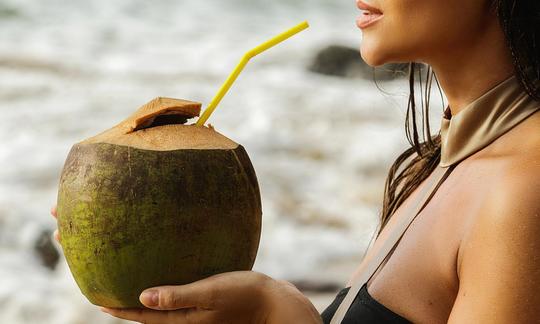

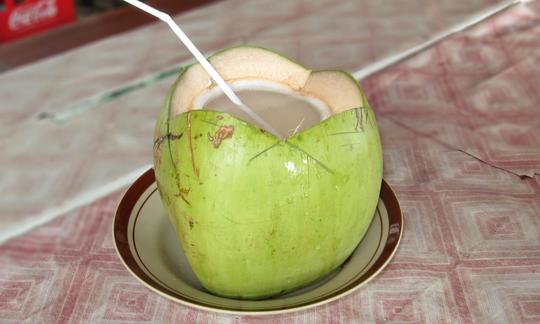

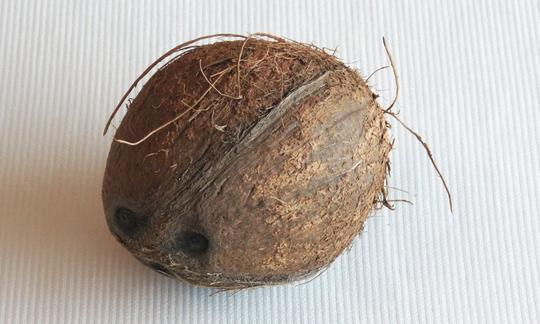

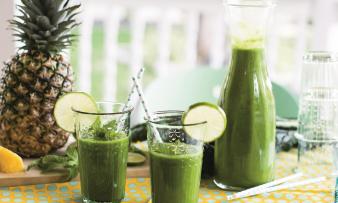
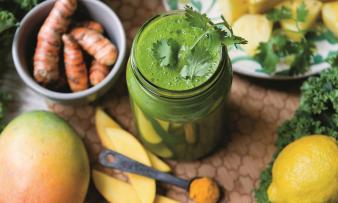
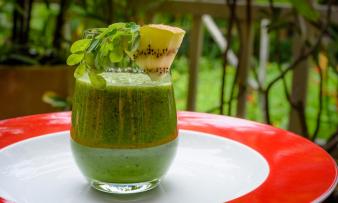





Comments